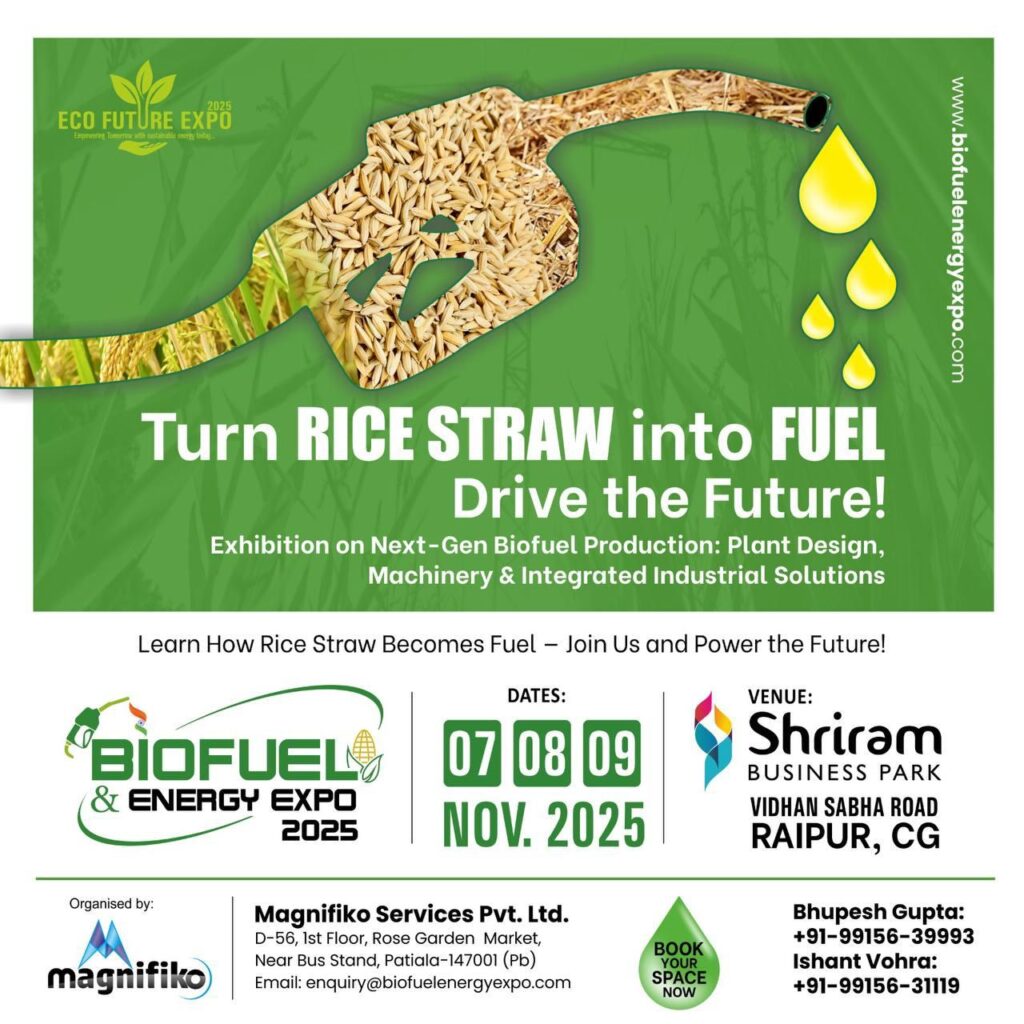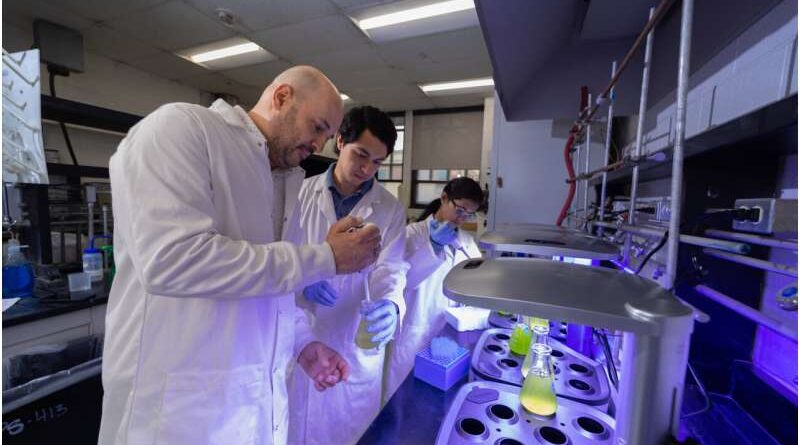Microalgae biofuel yields boosted with nanotechnology
by University of Texas at El Paso
edited by Gaby Clark, reviewed by Andrew Zinin
As global energy use continues to rise, the demand for renewable energy sources such as biofuels is also growing—especially in the transportation sector. Now, researchers at The University of Texas at El Paso have demonstrated how nanotechnology can significantly improve biofuel production from microalgae, offering a sustainable path forward.
The study, recently published in ACS Applied Bio Materials, focuses on the microalga Chlorella vulgaris, a fast-growing species commonly found in freshwater environments that is used to produce biofuels. Led by Hamidreza Sharifan, Ph.D., assistant professor in UTEP’s Department of Chemistry and Biochemistry, the team showed that controlled doses of zinc oxide (ZnO) nanoparticles can dramatically increase the organism’s lipid content, including the triacylglycerol used to produce biofuels.
Under normal growth conditions, the research team observed C. vulgaris cells contained about 14% lipids. But when exposed to moderate concentrations (30–50 mg/L) of synthesized ZnO nanoparticles, the cells increased their lipid content to as much as 48% of their mass—more than triple the baseline—without significant harm to the cells.
“Sometimes when people are stressed, they gain weight or, in other words, accumulate more lipids,” Sharifan said. “We found that a similar thing happens to the cells of the microalgae when we induce stress, in our case, by exposing them to zinc oxide nanoparticles, due to the effect of reactive oxygen species.”Abstract Credit: ACS Applied Bio Materials (2025). DOI: 10.1021/acsabm.5c00300
The team also observed that higher concentrations of ZnO (above 50 mg/L) caused oxidative damage to the cells, reducing their biofuel potential—highlighting the importance of threshold levels.

In addition to these findings, the researchers developed the Biofuel Suitability Score (BSS)—a new, scalable framework that evaluates and optimizes biofuel production conditions. Sharifan explained that the BSS integrates multiple factors, providing actionable insights to guide future strategies in sustainable energy production.
“This research exemplifies the innovative work our scientists are doing to address global energy challenges,” said Robert Kirken, Ph.D., dean of UTEP’s College of Science. “The team’s work significantly advances our understanding of sustainable bioenergy solutions, setting the stage for impactful environmental applications.”
The research team will now continue to refine their process in hopes of demonstrating its viability at large scale, also possibly using other species of microalgae that can thrive in environments such as wastewater and saltwater.
More information: Luis Pablo Salmeron Covarrubias et al, Advanced Nanoenabled Microalgae Systems: Integrating Oxidative Stress-Induced Metabolic Reprogramming and Enhanced Lipid Biosynthesis for Next-Generation Biofuel Production, ACS Applied Bio Materials (2025). DOI: 10.1021/acsabm.5c00300
This article has been republished from phys.org

